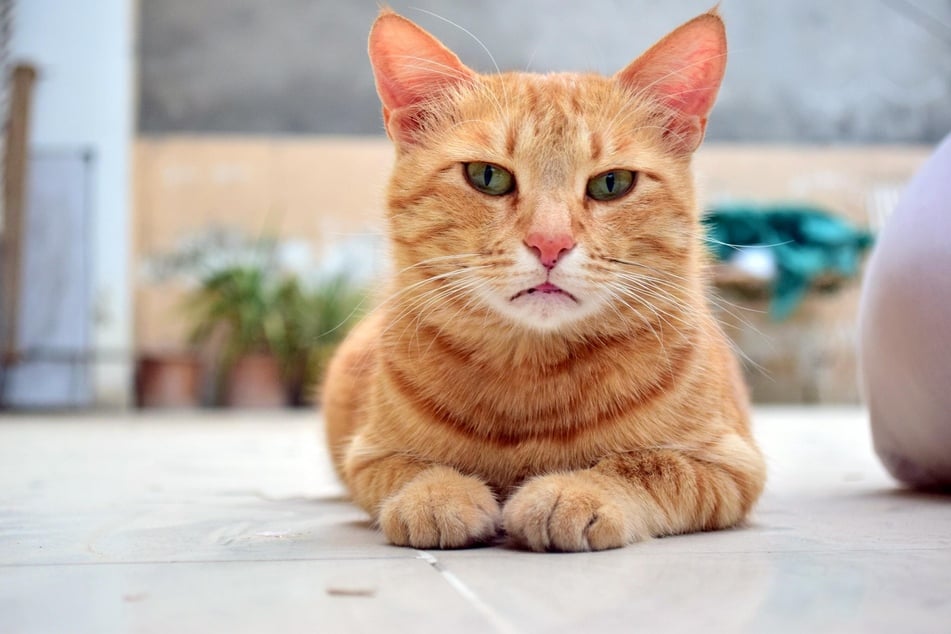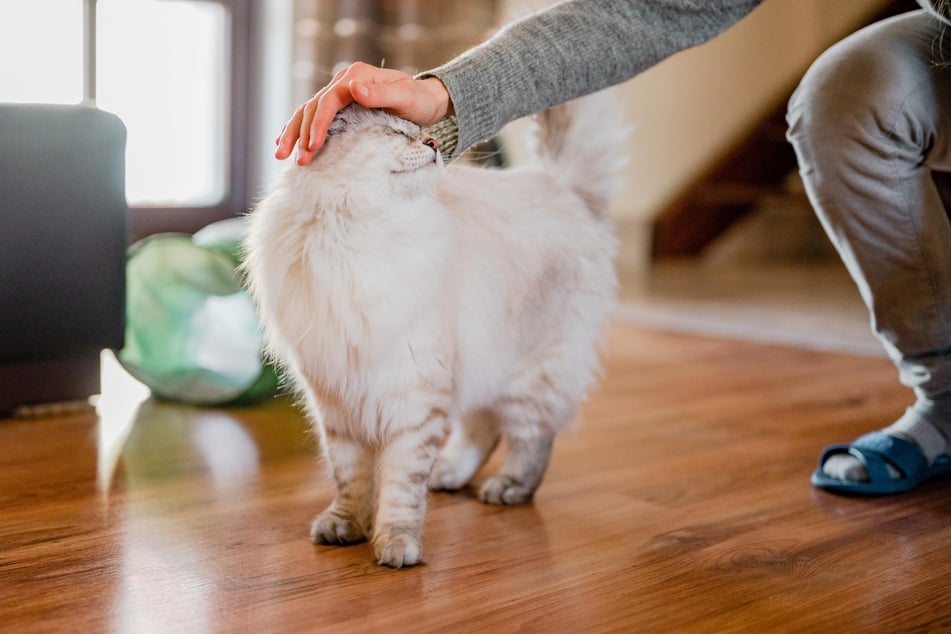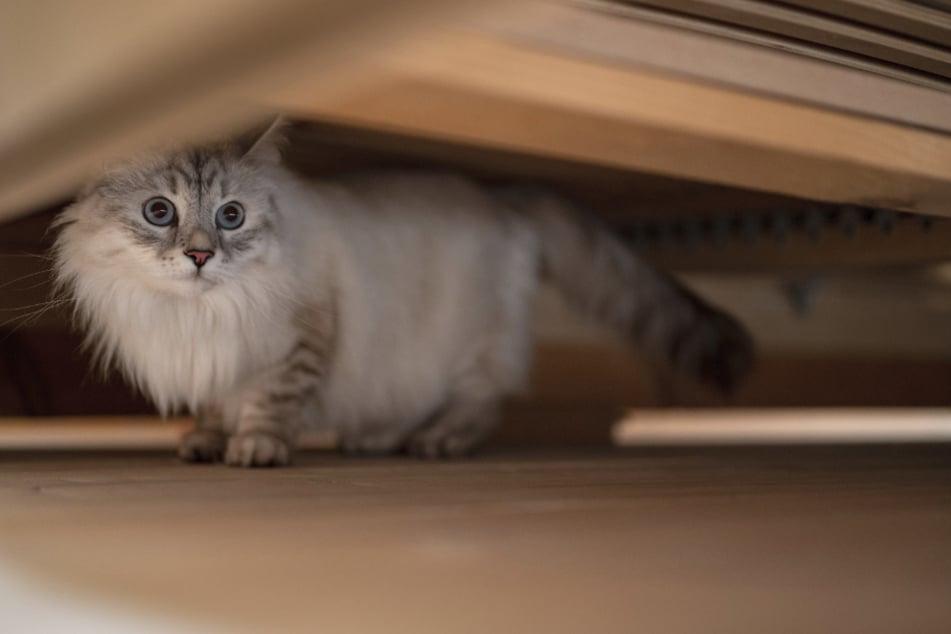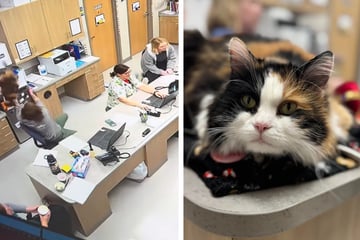Why is my cat limping? How to help hobbling kitties
Many owners might freak out if their cat starts limping, overly worrying and not taking proper precautions to help their furry friend get better. There are many reasons why your cat is limping, and lots of things you can do to help.

Cats are curious creatures, and can often get hurt.
If your cat is limping, it's quite likely that it has pulled a muscle and will be completely fine in a few days. On the other hand, though, it's always best to get it checked out by a veterinarian either way – just in case.
Whatever happens, cat owners should be cautious not to get too worried if they've got a limping cat. It is likely no big deal, though it is admittedly important to figure out how badly a cat is hurt and to take appropriate steps to protect its health.
In this cat guide, we'll take you though why your cat might be limping, what you can do to help, and what some of the more specific symptoms can mean.
Why is my cat limping all of a sudden?
It is completely normal for your cat to sometimes experience periods of mild discomfort or pain. It's not normal for that pain to be excessive or long-lived, though, so a cat owner would be wise to pay attention to how long it's been going on and in what way their cat is limping.
If your feline friend seems to have developed a limp for a long period of time, it's critical that it gets medical attention. Such behavior can suggest that the cat has injured itself, has an infection of some kind, or has a serious illness. If your cat limps constantly, it could also be lame, which might be a serious infliction.
Important: Cat owners should always take their fluff ball to the veterinarian if they have observed a consistent or worrying limp.
There are many possible reasons why your cat might be limping:
- Torn claws
- Arthrosis or arthritis
- Dislocated bones and joints
- Bite wound
- Torn ligament or tendon
- Bacterial inflammation (like chlamydia, for example)
- Insect bite
- Cracked bone (fissure)
- Fractured bone (fracture)
- Deficiency or metabolic disorder
- Nerve damage (due to diabetes, for example)
- Neurological diseases
- Contusion
- Cuts or other injuries
- Overstretching or pulled muscle
- Sprain
- Strain
- Ingrown nails
If you are worried about the cause of your cat's limp, or your pet is limping consistently for a longer period of time, a vet can take an X-ray of its legs and do blood work to determine the probably cause.

What if your cat is limping on its back legs and paws?
If your cat is walking funny and limping on its back legs and paws in particular, there are a variety of ailments that it could have. These should be checked out because they could be quite serious.
Some possible reasons for cat limping on its hind legs:
- Balance problems: A cat's inner ear houses a vestibular apparatus which is responsible for its sense of balance. An ear infection or blockage could affect the organ and therefore the cat's balance and mobility, causing a limp.
- Ataxia: This is a collection of disorders that affect a cat's balance and coordination. A cat with ataxia can also be known as a "wobbly cat", as they have significant difficulty with coordination. In addition, these issues can seriously damage your kitty's central nervous system.
- Poisoning: Poisoned cats will often stagger, tremble, and faint. Other symptoms include vomiting, listlessness, increased salivation, diarrhea, and death. If you suspect that your cat has been poisoned, you must immediately take it to the vet, as it could be fatal.
If your cat is limping on its back legs, then it could have trouble climbing, walking up stairs, and balancing in general. This is a very serious situation and should be dealt with professionally as soon as possible.
What if your cat is limping on its front paws?
Whether cats are limping on their front or back paws isn't necessarily indicative of one cause or another. Yet, there are a few things more likely to have happened if your cat has pain in its front paws.
Why? Well, this is a kitty's first point of contact with something, and the most likely paw to be injured when climbing or exploring.
Possible reasons for cats to limp on their front paws:
- The paw may have been caught somewhere, causing them to yank it out and hurt themselves.
- Cats use their front paws to scratch and attack when in a fight.
- They may have stepped on something, and it got stuck in their paw.
- It might have tried to walk across a hot surface like a stove, realizing that it was dangerous after the first step.
- They may have torn a nail while climbing or fighting.
While there are multiple front-paw specific reasons for a cat to be limping, all other reasons also apply.
What if your cat is limping, but still jumping and running?
You always have to remember that these fluffy little predators have been bred from much more formidable felines. Their ancestors evolved to show as little pain as possible, as that would make them a target in the wild.
Cool, right? Well, not really for cat owners.
A cat that is limping but still jumping around, climbing, or running, could still be in a great deal of pain. Do not ignore a cat's limp simply because otherwise it is acting normal.
What if your cat is limping, but not crying or in pain?
Us humans release those little salty droplets of water when we are feeling emotional. It may surprise you to know, however, that cats are not exactly like humans. In much the same way that cats may try to keep climbing when they are clearly in pain, they're also not going to be crying themselves to sleep at night.
It might seem like a nice existence, not crying all the time, but that doesn't mean that your cat isn't in pain. If it is limping, take it to the vet.

How to help a limping cat
While your first port of call should, of course, be the vet, there are still many ways to help your limping cat. If your cat has been examined by the vet, and nothing serious has been found or treatment has been recommended, then you should still keep your cat comfortable until it has recovered.
Here are some tips and tricks for helping a limping cat:
- Avoid games where the cat will make jerky and frantic movements
- Only let your cat explore outside for short periods of time, and always supervised
- Make sure that your cat eats and drinks enough
- Avoid stressful situations and keep your cat's home calm and peaceful
- In the case of physical injury, wait until it is fully healed until you let your cat out
- Make sure to keep your home clean to prevent the cat from getting infected
Whether home remedies can be successful depends on the cause of the cat's limp. Nerve damage or arthritis cannot be resolved by anyone other than a vet, if at all. On the flip side, a sprain can be healed with a few weeks of calm and restricted movement.
Should a limping cat go to the vet?
If your cat starts limping, you should first remain calm and start by examining its legs, including the paws, for wounds and stings. Look out for nasty little splinters, shards of broken glass, stones, or sticks.
In the case of small little bits and pieces stuck in your cat's paws, tweezers can be used to carefully remove them, but it is best that you let the vet do this. Removal can be difficult with cats, as they don't understand what's going on, and your veterinarian can also dress the wound appropriately.
If you cannot find an obvious reason for your cat's limp, it is especially important to visit the vet. This limping could be caused by a serious health condition like arthritis, which will need to be treated properly. No matter what, though, if your cat's limp doesn't go away within a day or two, a veterinarian should be contacted immediately.
These symptoms are of serious concern if your cat displays them:
- Apathy
- Fear or hiding
- Changing posture to relieve pain
- Loss of appetite
- Fever
- Yelping or obvious suffering
- Avoidance of touch
- Listlessness, weakness, or trembling
- Redness or swelling
- Blood stains
- Diarrhea
- Vomiting
If your cat shows any of these symptoms and behaviors, they must be taken for a veterinary examination as soon as possible.
First Aid Tip: If your cat is limping because it has been stung by an insect, the insect's stinger (possibly from a bee or wasp) needs to be carefully removed. Make sure not to crush the venom gland at the end of the stinger, as this may release venom into your fluffy friend (if it hasn't already been released). Carefully cool the area with an ice pack and then take your cat to the vet to make sure everything is okay.
Limping kittens: What else do you need to know?
Cats can limp for a whole variety of reasons - just like humans! If the limping lasts more than a day, it could suggest a more severe reason. While it can be a simple pulled muscle or a splinter, a limping cat could also be s sign of an animal that is in serious pain or severely sick. Even a simple splinter can cause a serious infection if left untreated.
It is often very hard to determine why your cat is limping without the help of a vet. So try to stay calm, and enlist their help.
Cover photo: Unsplash / Safoora Taimoor




